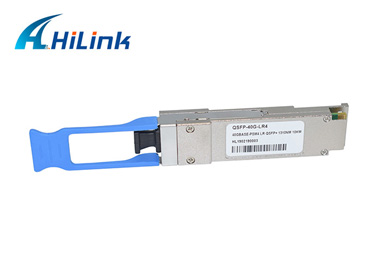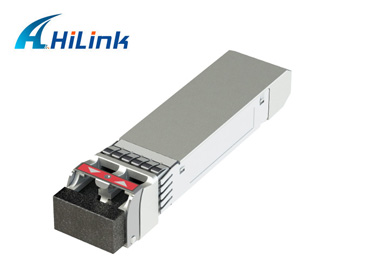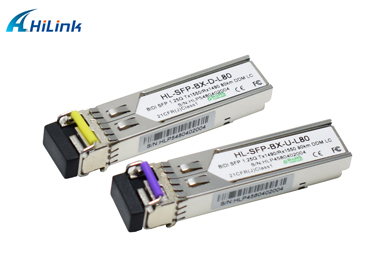Optical Modules VS Transponders: What's the Difference?
Jul. 07, 2022
An optical module is a network interconnection device that realizes photoelectric signal conversion, while a transponder is a network interconnection device that realizes regenerative amplification and wavelength conversion of optical signals. Although both optical module and transponder adopt the photoelectric conversion principle and can realize photoelectric conversion, the functions, and applications of the two are very different and not interchangeable. In this article, we will introduce you to the difference between optical modules and transponders.
Optical Module VS Transponder
Optical modules, as communication devices that transmit and receive optical signals, are commonly used in data centers, enterprise networks, cloud computing, FTTX, and other fiber optic communication systems. Usually, optical modules support hot-swapping and can be used on the module slots of network switches, servers, and other network equipment.
40G 10KM QSFP+ LR4
There are many types of optical modules in the market, such as 1G SFP, 10G SFP+, 25G SFP28, 40G QSFP+, 100G QSFP28, 400G QSFP-DD optical modules, etc. They are usually used with different types of fiber optic patch cords or network cables to achieve different distances of network transmission, ranging from 30 meters to 160 kilometers. In addition, BiDi optical modules can transmit and receive signals through a single fiber, effectively simplifying wiring, increasing network capacity, and reducing wiring infrastructure costs. Similarly, WDM series optical modules (i.e., CWDM and DWDM optical modules) can multiplex signals of different wavelengths onto the same fiber for transmission and are commonly used in WDM/OTN networks.
Common types of optical modules
Also known as optoelectronic wavelength converter or optical amplification repeater, the transponder is a kind of fiber media converter integrating transmitter and receiver, which can extend the distance of network transmission by converting wavelength and amplifying optical power, with the functions of balanced amplification, timing extraction, and identification of regenerative optical signals.
Today, common transponders on the market are 10G/25G/100G, of which 10G/25G transponders enable fiber conversion (e.g. dual-fiber unidirectional to single-fiber bidirectional), fiber type conversion (multimode fiber to single-mode fiber) and optical signal enhancement (amplification regeneration, shaping and clock retiming by converting common wavelength optical signals into ITU-T compliant defined wavelengths). Usually used with EDFA fiber amplifier and DCM dispersion compensator, it is widely used in metro and WDM networks, especially in ultra-long distance DWDM networks.
25GB SFP28 DWDM 20KM Transceiver
The 100G transponder (i.e. 100G multiplexer) is mainly developed for flexible conversion of different optical interfaces for 10G/40G/100G transmission, which means that the 100G transponder can support flexible combinations of 10GbE, 40GbE and 100GbE, and can be used in enterprise networks, campus networks, large data center interconnects, metro networks and some remote applications.
Difference between optical modules and transponders
As can be seen above, both optical modules and transponders can convert electrical signals into optical signals, but the differences between the two are
1. The optical module adopts a serial interface, which can transmit and receive signals inside the optical module; while the transponder adopts a parallel interface, which must be paired with an optical module to realize signal transmission, where the optical module on one side is used to transmit signals and the optical module on the other side is used to receive signals.
1.25G BIDI SFP 80KM
2. Although the optical module can realize the photoelectric conversion, the transponder can realize the photoelectric signal conversion from different wavelengths.
3. Although the converter can also easily handle low-rate parallel signals, it is large in size and power consumption compared to the optical module.
In short, the transponder can be seen as a disassembled optical module, but it accomplishes the remote WDM network transmission that is not possible with optical modules.
Summary
In summary, optical modules and transponders are still different in nature, especially in terms of function and application. Optical modules can only convert electrical signals into optical signals, while transponders can convert different types of signals, including fiber conversion, fiber type conversion, and wavelength conversion, to achieve longer distance network transmission.
Shenzhen Hilink (HAILI) Technology Co., Ltd. founded in 2007, is specialized in fiber optical products and networking solutions. Our main products are transceiver modules as QSFP, QSFP28, CWDM/ DWDM SFP/XFP. Our networking solutions are including FWDM, DWDM CWDM OLP, MPO AAWG, etc. In order to provide better service for our customers, we also supply other kinds of related fiber optical products. Our products and solutions are largely applied in cloudy computing, data center, networking access, and so on. Contact us today or visit our website to learn more about optical modules.















